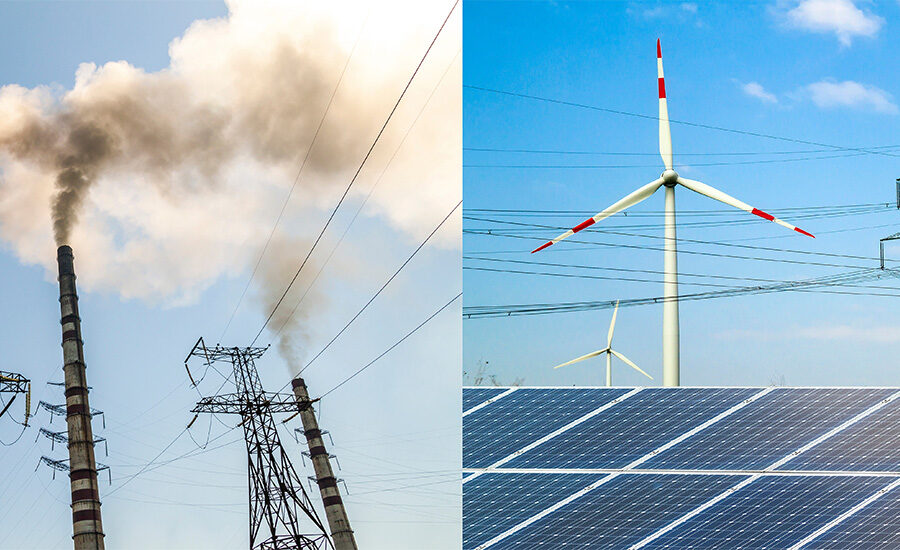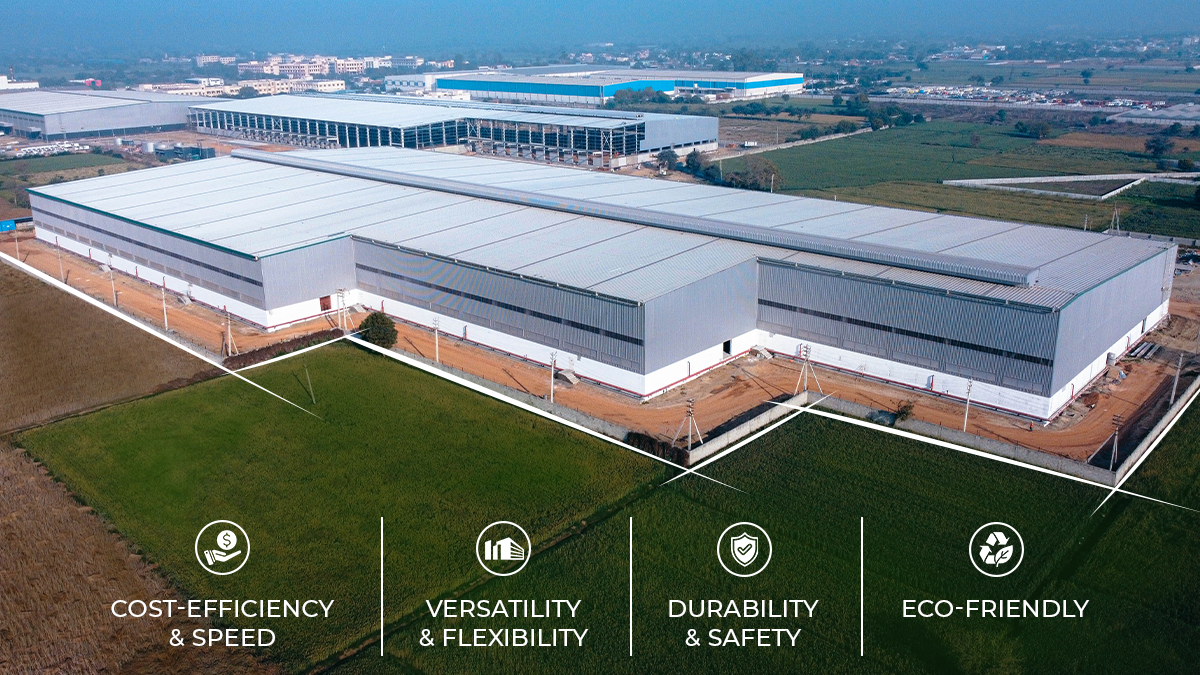
Clean Energy Faces Icy Chill in Washington’s Policy Reboot
[ad_1]
President Donald Trump signed an executive order July 7, instructing the US Treasury Dept. to end within 45 days the use of federal production and investment tax credits for solar and wind energy projects that won’t begin construction by July 4, 2026 or complete by Dec. 31, 2027. The order also requires the US Interior Dept. to evaluate all regulations to eliminate any “preferential treatment” for renewable projects.
The White House says the order codifies policy outlined in the recently enacted federal tax and spend legislation to cut the current 45Y or 48E federal tax credits for wind and solar energy in favor of energy sources such as coal, natural gas and nuclear energy.
Environmental and renewable energy sector groups warned that the action will prove devastating to wind and solar energy development in the U.S., leading to higher energy costs, price volatility and the erosion of U.S. competitiveness in a globalized clean-tech marketplace.
The administration says its goal is to bolster grid reliability by shifting investment toward baseload generation and away from what it calls “unreliable” intermittent sources. The move follows an executive order signed in April that directed the U.S. Energy Dept. to assess resource adequacy across all regions.
The credit phaseout—anticipated as far back as fall 2024, when then-candidate Donald Trump was campaigning for a second term—has far-reaching implications for firms that work in the energy sector.
Renewable-energy developers and their supply chains face immediate uncertainty, while fossil-fuel generators and allied construction firms may see an uptick in project pipelines.
RELATED
Senate Deals Setback to Clean Energy Projects With Tax and Spending Package
Impact on Renewable-Energy Construction
Wind and solar energy sectors have benefited from production and investment tax credits for nearly two decades, embedded in statutes ranging from the Energy Policy Act of 2005 to the Inflation Reduction Act of 2022. According to the Energy Information Administration’s Annual Energy Outlook 2023, the latter’s provisions alone were expected to drive wind and solar production that would account for more than half of U.S. capacity additions by mid-century.
Before the legislation, renewable-energy developers could claim a 10-year production tax credit of up to 1.5 cents per kilowatt-hour for facilities meeting wage, apprenticeship and domestic content requirements under Section 45Y of the federal tax code..
Alternatively, an investment tax credit of up to 30% of project costs was available under Section 48E of the tax code, with extra credits offered for domestic manufacturing or in designated energy communities.
Both credits offered direct‐pay and transferability options, enabling tax‐exempt entities to monetize the incentives.
Under the new rules, wind and solar facilities that begin construction more than one year after enactment—i.e., after July 4, 2026—must be placed in service by Dec. 31, 2027, to qualify for any 45Y or 48E credits; projects that started construction on or before that anniversary remain subject to the original Inflation Reduction Act rules, without an extended service deadline.
Any credits for wind and solar energy vanish for facilities placed in service after that deadline, although nuclear, geothermal, hydropower and standalone battery-storage projects continue under the prior federal phase-down schedule through 2033, according to The Tax Law Center. In addition, residential solar‐water‐heating and small‐wind installations under Section 25D lose eligibility entirely under the new law.
Eliminating those credits within 45 days—as outlined in the fact sheet—will be felt quickly by ongoing projects. Without those federal incentives, community solar developers warn that securing financing for thousands of megawatts in state-approved projects will be difficult.
A Princeton University ZERO Lab report from early July estimates the legislation will cut U.S. capital investment in electricity and clean fuels by $500 billion over the next decade, reducing new solar capacity by 140 GW and wind by 160 GW through 2035.
The Congressional Research Service official summary of the legislation identified that grandfathering provisions ensure any project whose construction began before Jan 1, 2025, and retains eligibility for legacy Section 45 or Section 48 credits under the Inflation Reduction Act’s original phase‑down schedules. According to the National Renewable Energy Laboratory, each gigawatt of new solar requires roughly 4,000 to 5,000 construction jobs during its construction period. An employment study conducted last year by the Energy Dept. found that the U.S. solar industry supported more than 250,000 jobs in 2024 alone; wind supported another 120,000.
Without tax credits, clean energy advocates say, jobs across multiple industries could be lost or deferred, weakening demand for concrete, rebar and specialized installation equipment—all of which are needed to build a “clean power” grid.
Boost for Fossil-Fuel Projects
Conversely, the lifespan of coal and natural-gas plants, as well as new development, might see a revival. The bill improves traditional energy tax incentives by mandating faster onshore and offshore oil-and-gas lease sales with lower royalty rates. It also extends deductions for intangible drilling costs and bonus depreciation on extraction equipment.
“We applaud [bolstering] America’s energy advantage and support economic growth,” American Petroleum Institute President and CEO Mike Sommers said in a statement.
Several utilities have deferred coal-plant retirements or begun early discussions with engineering, procurement and construction (EPC) contractors to assess feasibility of new gas-fired capacity.
DOE’s July 2025 “Resource Adequacy Report” modeled a scenario in which the announced retirements of 104 GW of firm capacity proceed, with only 22 GW of like-for-like baseload additions by 2030, leading to dramatic grid shortfalls unless dispatchable projects accelerate.
S&P Global reported that Duke Energy recently filed with South Carolina regulators to build a 1.4 GW combined-cycle gas plant in Anderson County—part of what it said was an “urgent” bid to meet rising demand. The utility also has held preliminary engineering talks with EPC firms about site layout and timeline.
From a labor-market perspective, the construction of a combined-cycle gas plant typically employs 400 to 600 workers over an 18- to 24-month period. If permitting and financing hurdles are cleared, these projects could help absorb displaced workers from the renewables sector, although site prep, permitting—and possible local opposition—may slow that projection.
Supply Chain and Financing Considerations
Removing federal credits could dampen appetite among tax-equity investors, who provide roughly 40% of capital for renewable projects, according to a 2021 analysis by Kirkland & Ellis.
The law firm noted that equity contributions rise to nearly 60% for wind projects. Likewise, banks and institutional funds that underwrite project bonds and construction loans are likely to tighten lending, raising interest rates and reducing leverage.
The International Monetary Fund’s “Global Financial Stability Report” from April 2025 finds that, as borrower cash flows become less predictable, “banks tighten lending criteria due to rising credit risks,” in turn increasing borrowing costs.
Equipment manufacturers—from solar-module suppliers to steel-reinforcement mills—are likely to see order backlogs shrink, potentially idling plants and laying off workers.
In contrast, fossil-fuel infrastructure tends to rely more on rate-based utility finance or merchant-plant models, making it less dependent on tax equity. However, these projects face higher fuel-price risks and longer permitting timelines.
Fossil producers may also struggle to secure financing if lenders, subject to corporate ESG mandates, reduce their exposure to coal and gas.

Grid Reliability Claims Under Scrutiny
The administration asserts that renewables “compromise America’s electric grid” and threaten reliability. Yet multiple independent studies conclude that renewables—when paired with storage and demand-response programs—can enhance both reliability and decarbonization.
A 2023 National Renewable Energy Laboratory analysis found that a balanced mix of wind, solar and battery storage could meet peak demand in most U.S. regions by 2035, with loss-of-load hours comparable to today’s levels and at a lower overall system cost.
Grid operators in high-renewables regions—such as the California ISO and ISO-New England—have maintained reliability through market reforms, ancillary services and transmission upgrades.
DOE’s own report warns that wholesale retirements without firm replacements could increase loss-of-load hours more than 100-fold by 2030 under a “plant closures” scenario.
Energy-sector analysts argue that strategic investments in grid modernization, interregional transfers and flexible resources would deliver more reliable, cost-effective outcomes than eliminating subsidies outright.
Hannes Pfeifenberger, principal at the Brattle Group consulting firm noted: “We can get at least 50% more out of the existing grid with grid-enhancing technologies, power-flow control devices and high-performance conductors … at a lower cost,” in comments to Reuters Events.

Economic and Environmental Trade-Offs
The immediate market reaction has been negative. On July 8, shares of major renewable-energy developers fell as investors weighed rising project risks and cost pressures.
Abigail Ross Hopper, president and CEO of the Solar Energy Industries Association, asserted that the new law “appears to target long-standing and well-established tax standards” that companies rely on for securing financing and planning timelines for undertakings like solar, wind, carbon capture and hydrogen projects.
“We will continue to make the case that business certainty, predictability and even-handedness are bedrocks of federal policy that cannot be undone by the stroke of a pen,” she said in a statement. “We expect the Treasury Department to follow the law.”
While coal-based generators may enjoy short-term revenue boosts, their long-term viability remains in doubt. Most industrialized nations continue to pursue decarbonization, employing tools such as carbon taxes and stricter emissions limits.
Environmental groups say the rollback undermines the clean energy transition, increases power-sector emissions and will raise utility bills.
The Sierra Club, Natural Resources Defense Council and others note that renewables accounted for nearly one-third of U.S. power generation in 2024, lowering both fuel and operating costs. Reversing course could result in retail electricity rates increasing by 5% to 10% over the next decade, according to a Rhodium Group model.
“This [policy] is what happens when a major political party, in the grips of a personality cult, teams up with oil company CEOs, hedge fund donors, and climate deniers… [and] isn’t about reform—it’s about rewarding the super rich and doling out fossil fuel industry handouts,” John Noël, deputy climate program director at Greenpeace USA, said in a statement.
EarthJustice, the nonprofit public interest environmental law organization, went further in its condemnation, calling the reconcilation law a “self-inflicted tragedy” for the country that will drive up energy costs, kill thousands of clean energy jobs and deny the country its once-unquestioned leadership role on renewable energy policy.
“As bad as this bill is, we still have legal pathways to fight back,” Abigail Dillen, president of Earthjustice, said in a statement, “We will redouble our work to protect people’s access to clean air and water, stop short‑sighted extraction and compel clean energy transition in all the forums where we litigate the future of energy.”
Internationally, ending U.S. clean-energy subsidies will likely forfeit the global leadership Noël referenced. China added 140 GW of wind and solar in 2024—more than the entire U.S. capacity—and maintained incentives to bolster domestic manufacturing, according to a 2025 report by Turkey’s State Grid Energy Research Institute.
What’s Next?
Even some Republican lawmakers from renewables-rich red states have expressed concern over a total rollback, arguing that clean-energy jobs and investment are vital to local economies, “Senate Republicans have passed a budget bill that phases out clean energy tax credits more gradually … aiming to avoid undermining billions in investments and eliminating jobs, particularly in red states that have benefited from the [Inflation Reduction Act],”
Sen. John Curtis (R‑Utah), told the Associated Press.
Bipartisan negotiations may produce carve-outs for community projects or partial credit extensions. Still, the administration’s intent is clear: it views renewables subsidies as market distortions.
For the construction sector, the pivot means retooling project pipelines, managing workforce shifts and adjusting supply-chain forecasts. Firms with mixed energy portfolios may fare best. Meanwhile, utilities and developers must navigate a shifting policy environment, relying on regional grid planning and evolving market signals to guide future investments.
As Congress further debates implementation in coming weeks, one question looms: Can the U.S. deliver affordable, reliable and decarbonized electricity while shifting back to baseload projects, or will the new policy derail progress on grid modernization and clean energy?
[ad_2]
Source link
Post a Comment
You must be logged in to post a comment.







